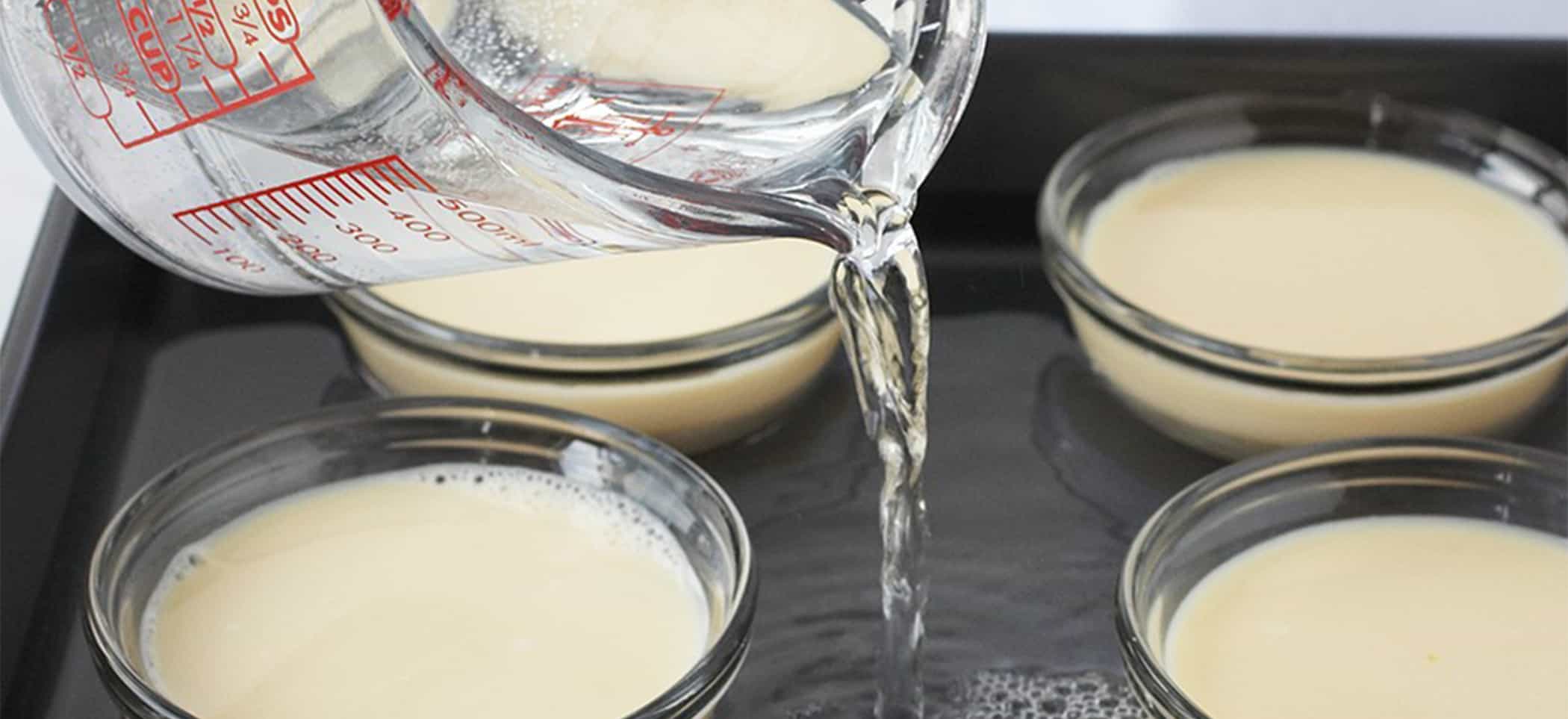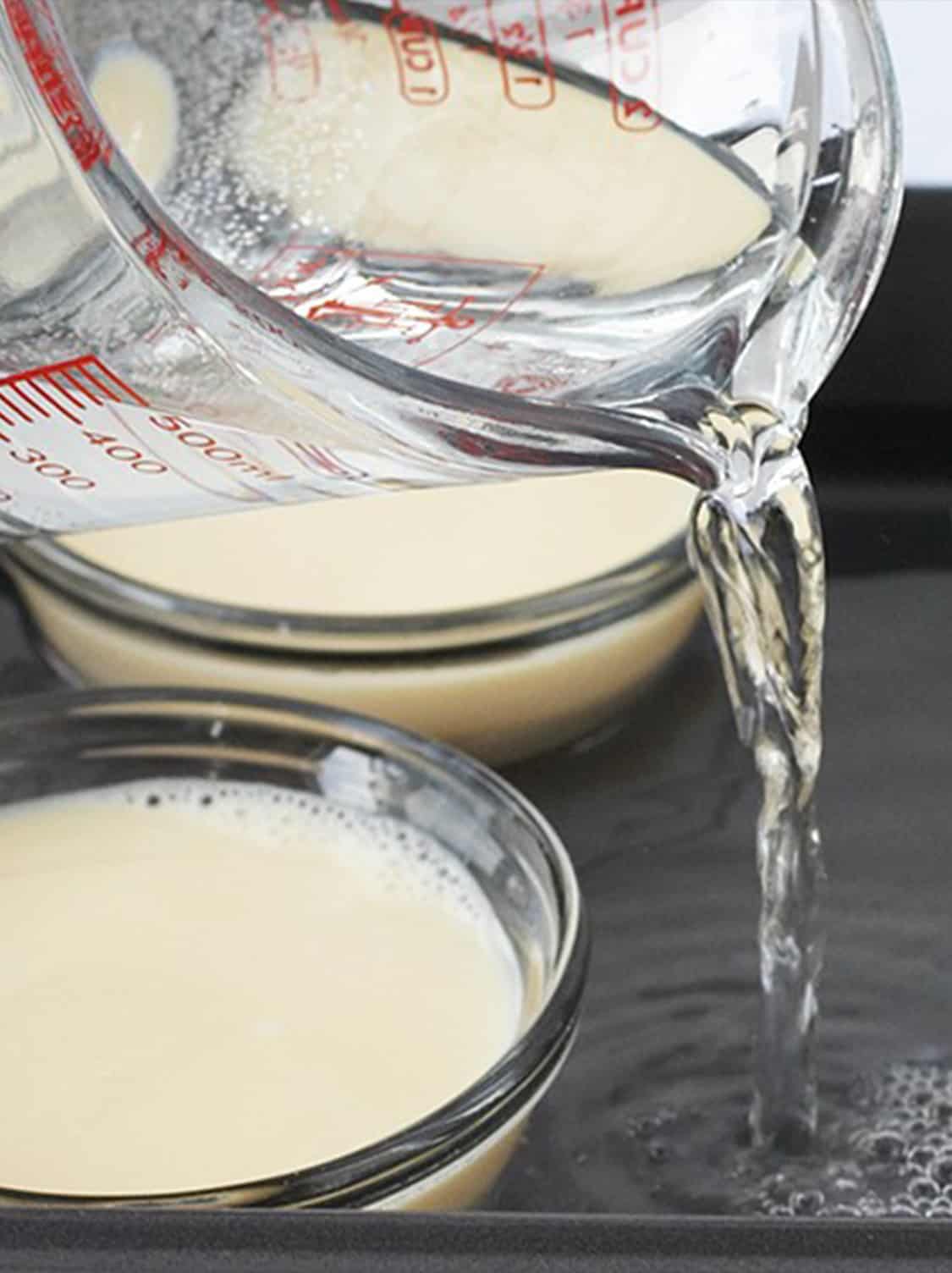

Directions
HEAT oven to 350°F. HEAT milk in small saucepan until very hot. Milk should be steaming but not bubbling. Meanwhile BEAT eggs, sugar, vanilla and salt in medium bowl until blended but not foamy; slowly stir in hot milk.
PLACE six lightly greased 6-oz. custard cups in baking pan large enough to hold cups without touching each other or sides of pan. POUR egg mixture into cups, dividing evenly. SPRINKLE with nutmeg, if desired.
PLACE pan on rack in the center of a 350°F oven; pour very hot water into the pan (hot-water bath) to within 1/2 inch of top of cups. BAKE until knife inserted near center comes out clean, 25 to 30 minutes; centers will still be soft. REMOVE cups from water bath at once. COOL on wire rack 5 to 10 minutes. SERVE warm or refrigerate until cold.
Ingredients
- 4 large EGGS
- 3 cups milk
- 1/2 cup sugar
- 1 1/2 tsp. vanilla
- 1/4 tsp. salt
Tips
One-dish custard: Recipe can be baked in lightly greased 1-1/2 qt. soufflé or baking dish. Pour hot water to within 1 inch of top of dish. Increase baking time to 35 to 40 minutes.
For perfectly smooth custard: Strain it through a sieve when filling custard cups or baking dish to remove any tough egg strands.
Don’t skip the hot-water bath. A hot-water bath, or bain-marie, insulates the custard from the direct heat of the oven and promotes even cooking so the edges don’t overcook before the center is done. Very hot tap water will do.
When is it done? Baked custard should be removed from the oven (and water bath) before the center is completely set. The center will jiggle slightly when dish or cup is gently shaken. Custard will continue to “cook” after it’s removed and center will firm up quickly. Overbaked custard may curdle. The knife test: Test for doneness with a thin-bladed knife. Insert knife about 1 inch from the center of a one-dish custard; midway between center and edge of cups. If knife is clean when pulled out, the custard is done. If any custard clings to the blade, bake a few minutes longer and test again.
This recipe is an excellent source of choline, and a good source of protein.
Per serving: 1/6th Recipe
- Calories 177
- Total fat 6 g
- Saturated fat 3 g
- Polyunsaturated fat 1 g
- Monounsaturated fat 2 g
- Cholesterol 134 mg
- Sodium 202 mg
- Carbohydrates 23 g
- Fiber 0 g
- Sugar 23 g
- Protein 8 g
- Vitamin A 88 mcg
- Vitamin D 1 mcg
- Folate 22 mcg
- Choline 118 mg
- Calcium 167 mg
- Iron 1 mg
- Potassium 220 mg
To ensure food safety, eggs should be cooked until both the yolk and the white are firm. Consuming raw or undercooked eggs may increase your risk of foodborne illness, especially for those with certain medical conditions. For recipes that call for eggs that are raw or undercooked when the dish is served, use either pasteurized shell eggs that have been treated to destroy Salmonella, or use pasteurized egg products.
